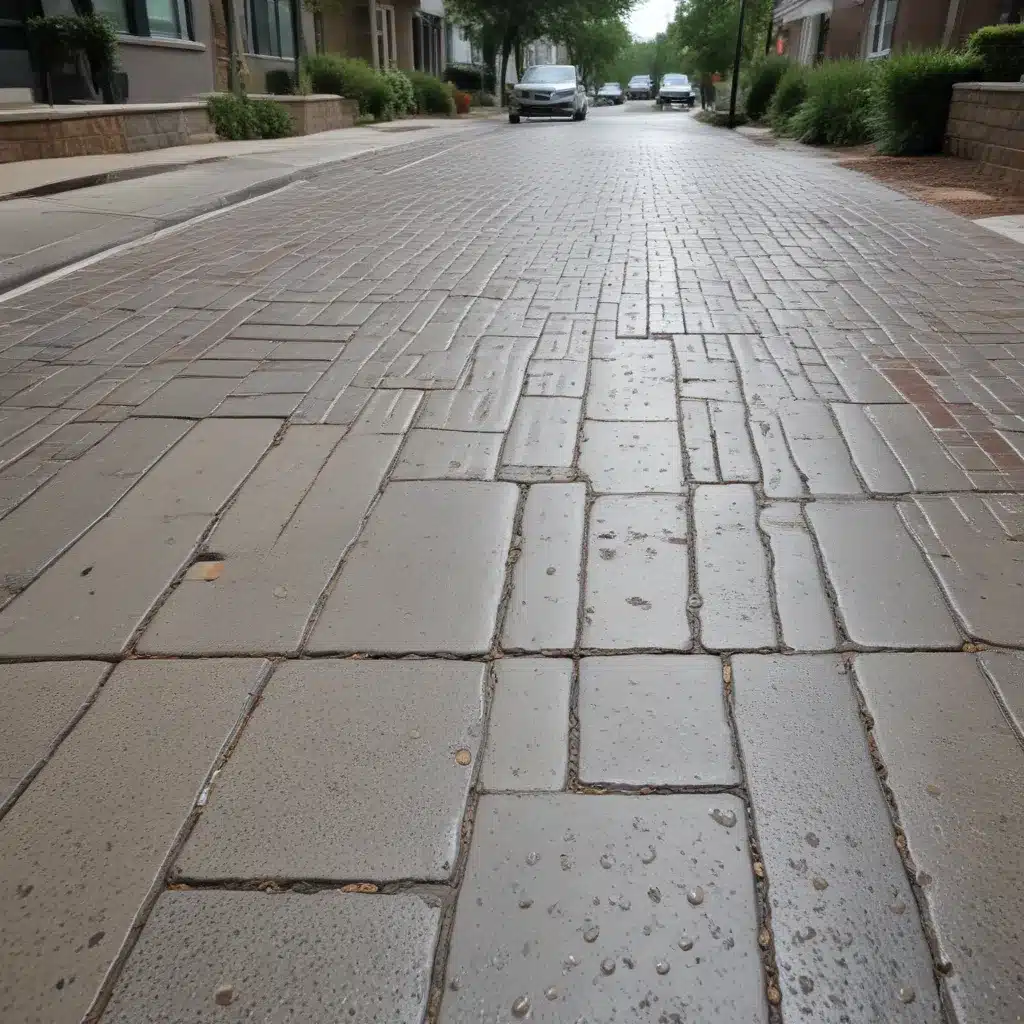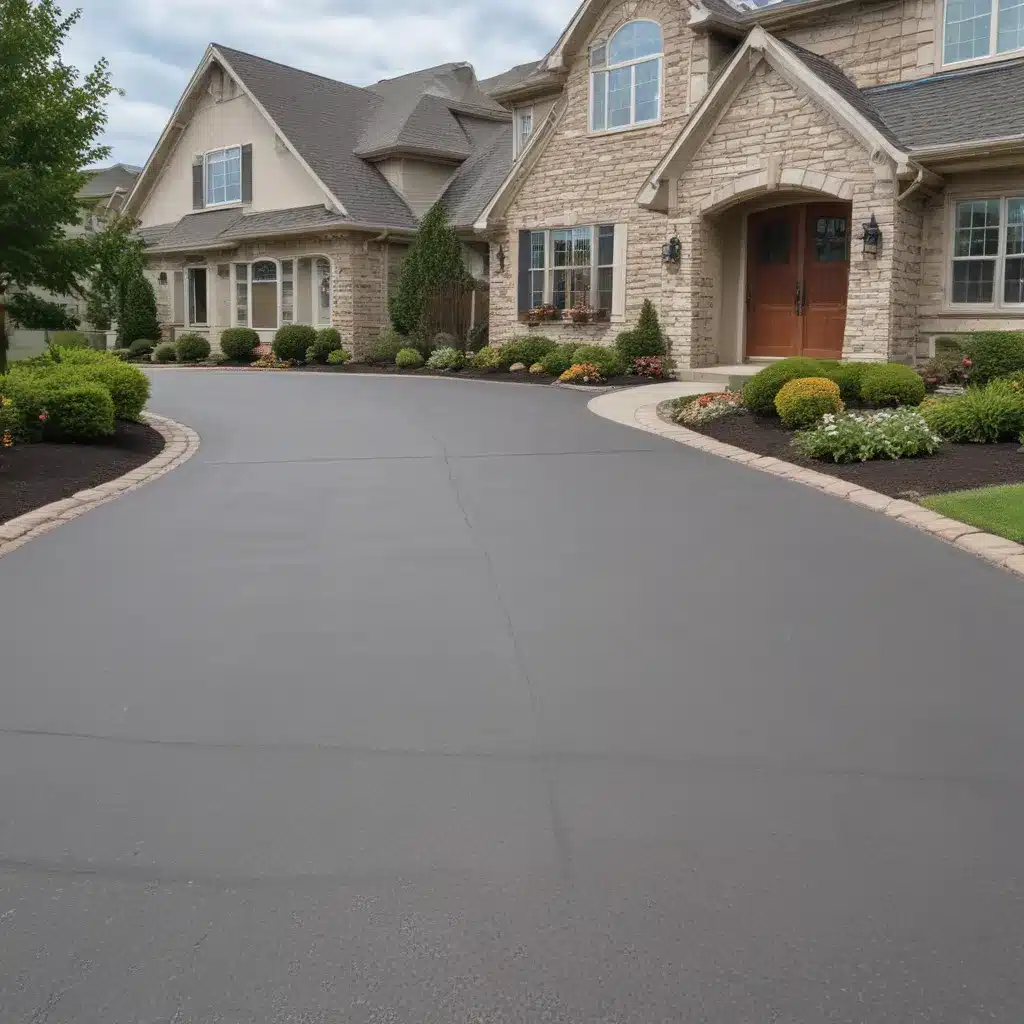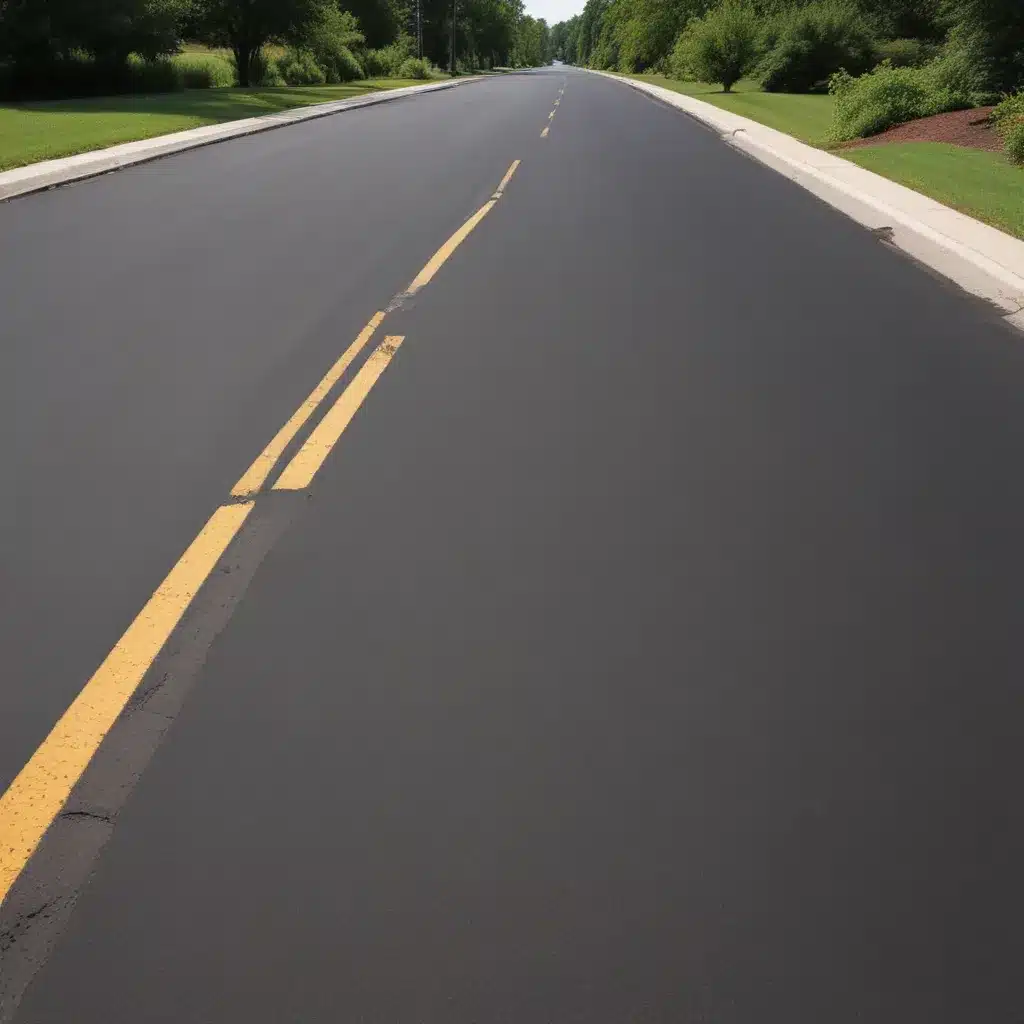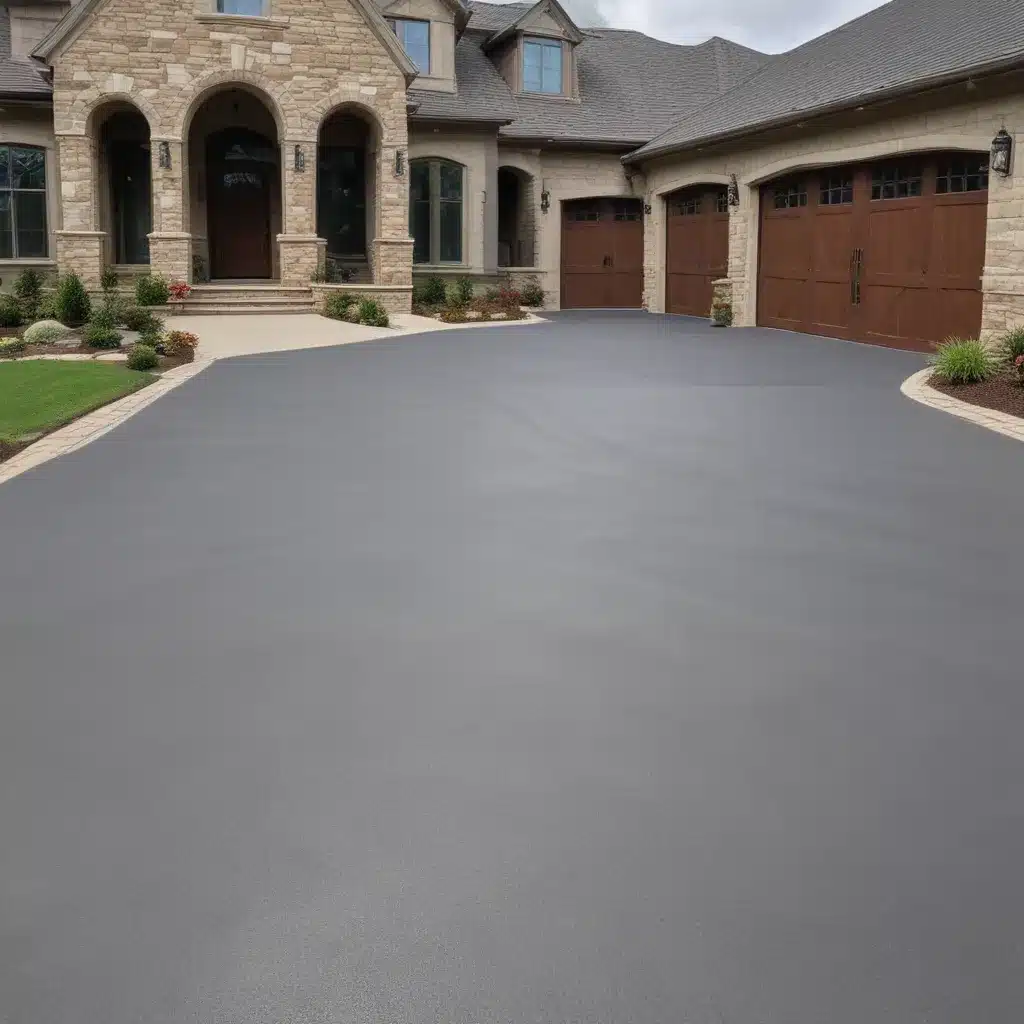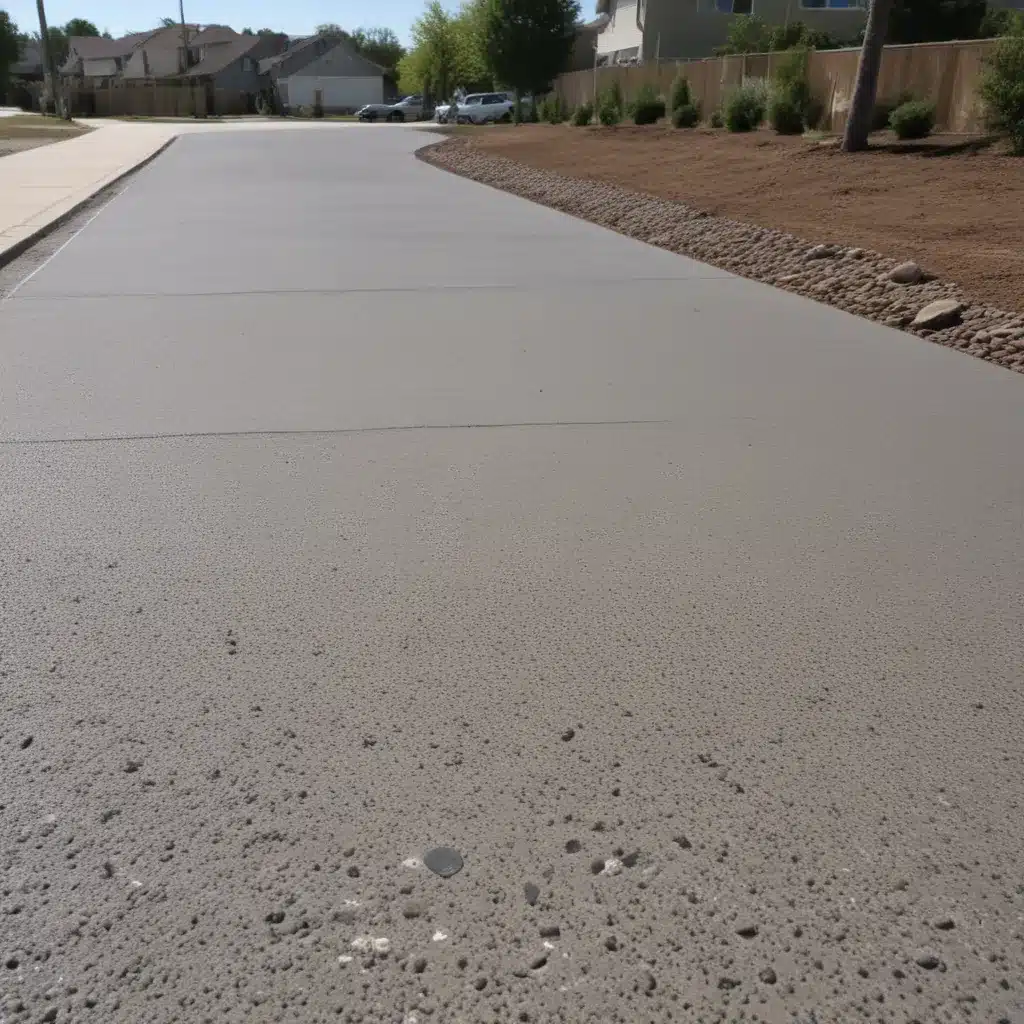The Problem with Traditional Pavement
You know the feeling – you’re out for a stroll after a heavy rainstorm, and your shoes are squelching with every step. Puddles have formed all over the pavement, lingering long after the clouds have cleared. Where is all that water going? Well, that’s the problem with traditional pavement – it’s impermeable, meaning it doesn’t allow water to soak through. Instead, the rain collects on the surface, creating flooding, erosion, and other drainage issues.
As a driveway services company, we’ve seen the consequences of impermeable pavement up close. Homeowners struggle with flooded driveways, cracked concrete, and the headache of dealing with stormwater runoff. But there’s a solution that can turn this problem on its head – permeable pavement. By letting the rain soak in, permeable pavement can help mitigate these issues and even provide some unexpected benefits.
The Permeable Pavement Advantage
Permeable pavement is a versatile paving material that allows water to infiltrate through the surface and into the ground below. This might seem like a small difference, but it can have a big impact on the functionality and sustainability of your driveway or other paved surfaces.
One of the primary advantages of permeable pavement is its ability to reduce stormwater runoff. Instead of pooling on the surface, the water is able to percolate down into the soil, where it can recharge groundwater supplies and reduce the strain on local drainage systems. This helps to prevent the kind of flooding and erosion that can wreak havoc on traditional pavement.
But the benefits don’t stop there. Permeable pavement can also help to improve water quality by filtering out pollutants and sediment as the water passes through the surface. This makes it a more environmentally friendly option, particularly in areas where stormwater runoff can be a concern.
How Permeable Pavement Works
Okay, so we’ve established that permeable pavement is good for the environment and your driveway, but how exactly does it work? The key lies in the unique composition of the material.
Unlike standard concrete or asphalt, permeable pavement is made up of a porous surface layer and a subsurface layer of crushed stone or gravel. The porous surface allows water to pass through, while the subsurface layer serves as a reservoir, storing the water temporarily before it gradually filters down into the soil.
This design not only facilitates water infiltration, but it also helps to reduce the risk of cracks and other damage to the pavement. By allowing water to move through the surface, permeable pavement can actually reduce the buildup of pressure that often leads to cracking and deterioration.
Choosing the Right Permeable Pavement
With all these benefits, you might be wondering why permeable pavement isn’t the default choice for driveways and other paved surfaces. The truth is, not all permeable pavement is created equal, and the specific needs of your property will determine the best option.
There are several different types of permeable pavement, each with its own unique characteristics and applications. Porous asphalt, for example, is a popular choice for driveways and parking lots, offering a smooth, durable surface that can handle regular vehicle traffic. Permeable concrete, on the other hand, might be better suited for pedestrian areas or low-traffic zones.
Interlocking pavers are another versatile option, allowing for a customizable look and feel while still providing the benefits of permeable design. These modular units can be arranged in a variety of patterns and come in a range of colors and materials to complement the aesthetic of your property.
When it comes to choosing the right permeable pavement for your needs, it’s important to consider factors like the intended use, the local climate, and the soil conditions of your site. Working with a reputable driveway services company can help ensure you make the best choice and get the most out of your permeable pavement investment.
Real-World Examples of Permeable Pavement in Action
To really understand the power of permeable pavement, let’s take a look at some real-world examples of it in action. One such case is the parking lot of a local community center that was recently retrofitted with a permeable concrete surface.
Prior to the upgrade, the lot was prone to flooding after heavy rains, creating a slippery, hazardous environment for visitors. But with the new permeable pavement in place, the story has changed dramatically. Now, the water is able to soak through the surface and into the ground, eliminating the pooling and drainage issues that plagued the site before.
“It’s been a game-changer for us,” says the center’s director. “Not only have we solved our flooding problems, but we’re also seeing the environmental benefits of reduced runoff and improved water quality. It’s a win-win for the community.”
Another example can be found in a residential neighborhood where homeowners have opted for permeable pavers for their driveways. By choosing this more porous option over traditional concrete or asphalt, they’ve been able to reduce the strain on the local stormwater system and minimize the amount of pollutants and sediment that end up in nearby waterways.
“We really noticed the difference after the first big rain,” says one homeowner. “Instead of watching the water pool up and eventually overflow onto the street, it just soaks right through the pavers and into the ground. It’s amazing to see how much of a difference it makes.”
The Future of Permeable Pavement
As the world grapples with the growing challenge of stormwater management, the importance of permeable pavement is only going to continue to rise. Cities and municipalities are increasingly turning to this innovative paving solution as a way to reduce the burden on aging infrastructure and protect the local environment.
But the benefits of permeable pavement extend far beyond just stormwater control. By allowing water to infiltrate the ground, this technology can also help to recharge groundwater supplies and support the health of local ecosystems. And as concerns about water scarcity and drought continue to mount, the ability to capture and store rainwater becomes even more valuable.
Of course, the adoption of permeable pavement isn’t without its challenges. There are still hurdles to overcome when it comes to cost, installation, and maintenance, not to mention the need for greater public awareness and education. But with the right strategies and support, I believe we can overcome these obstacles and unlock the full potential of this transformative technology.
So, the next time you find yourself sloshing through a puddle-filled driveway, I encourage you to consider the benefits of permeable pavement. It might just be the solution you need to let the rain soak in and transform your outdoor spaces for the better.

